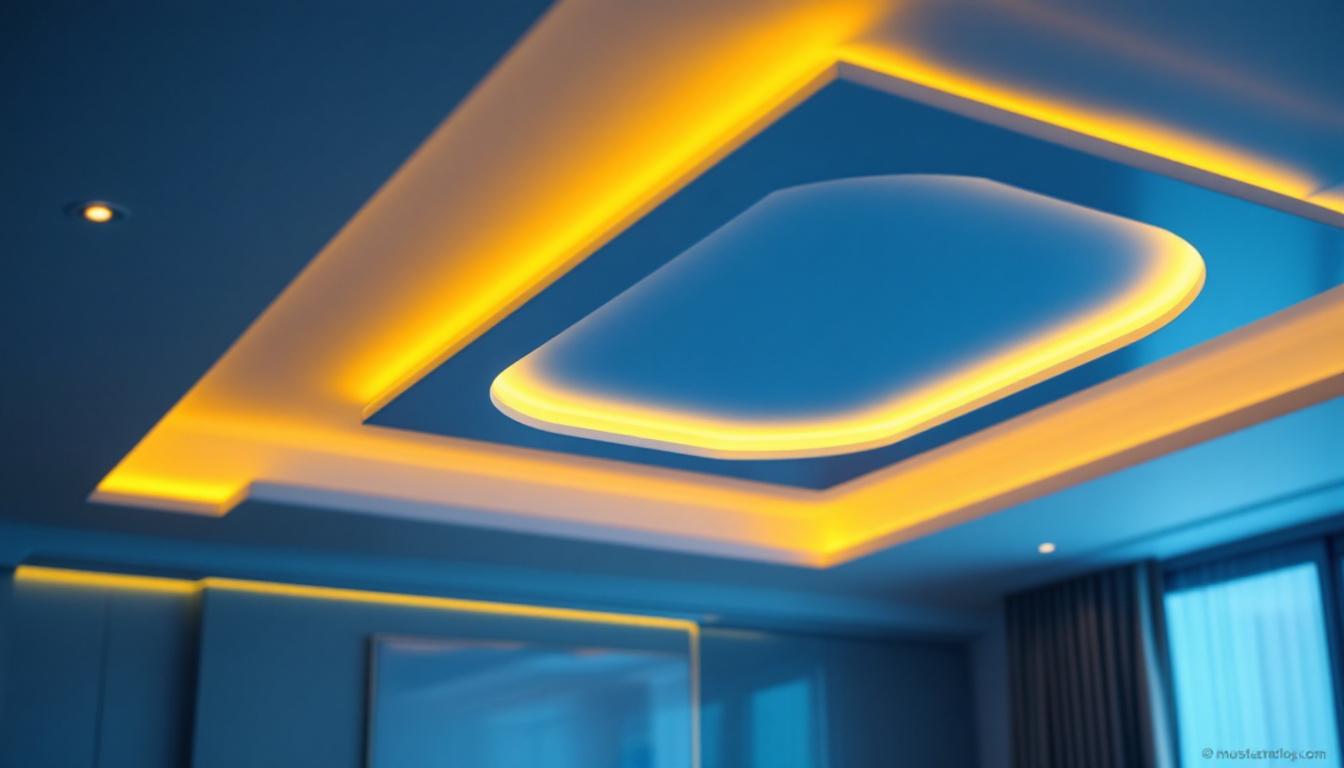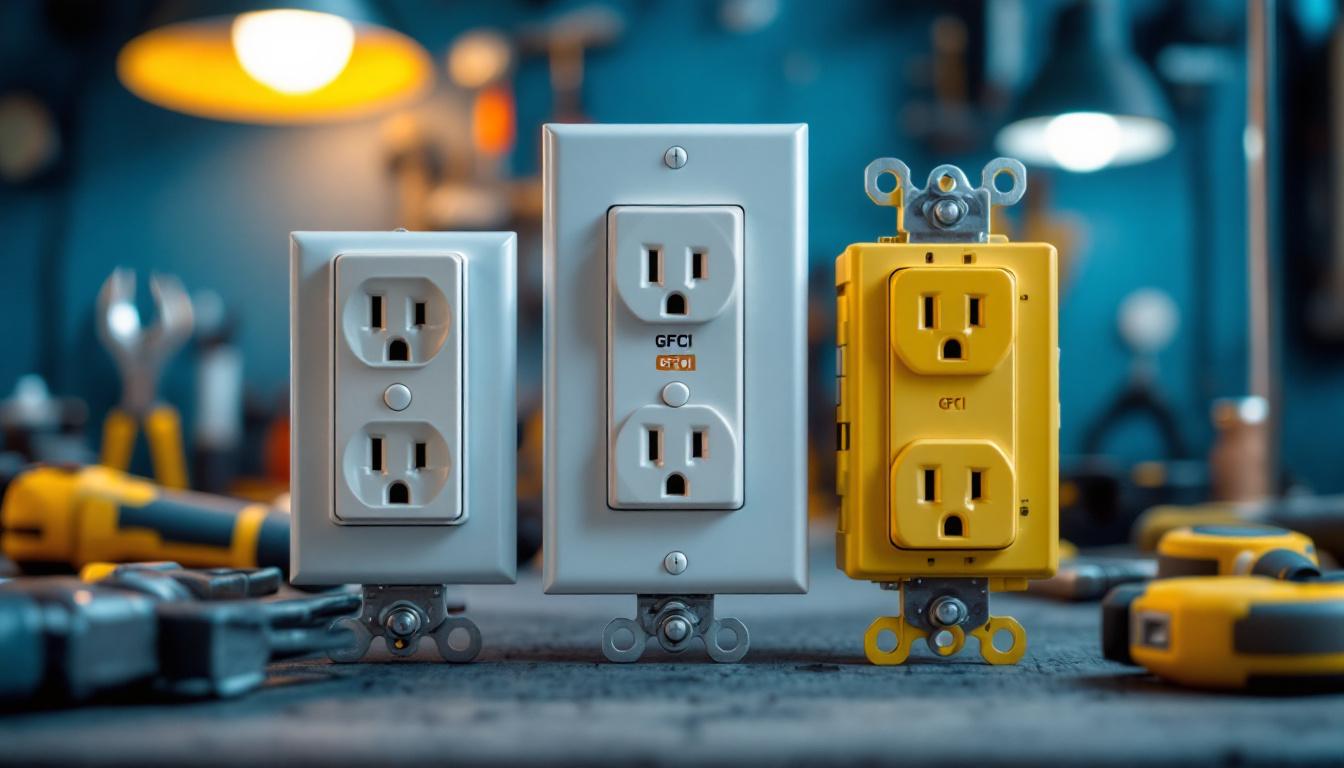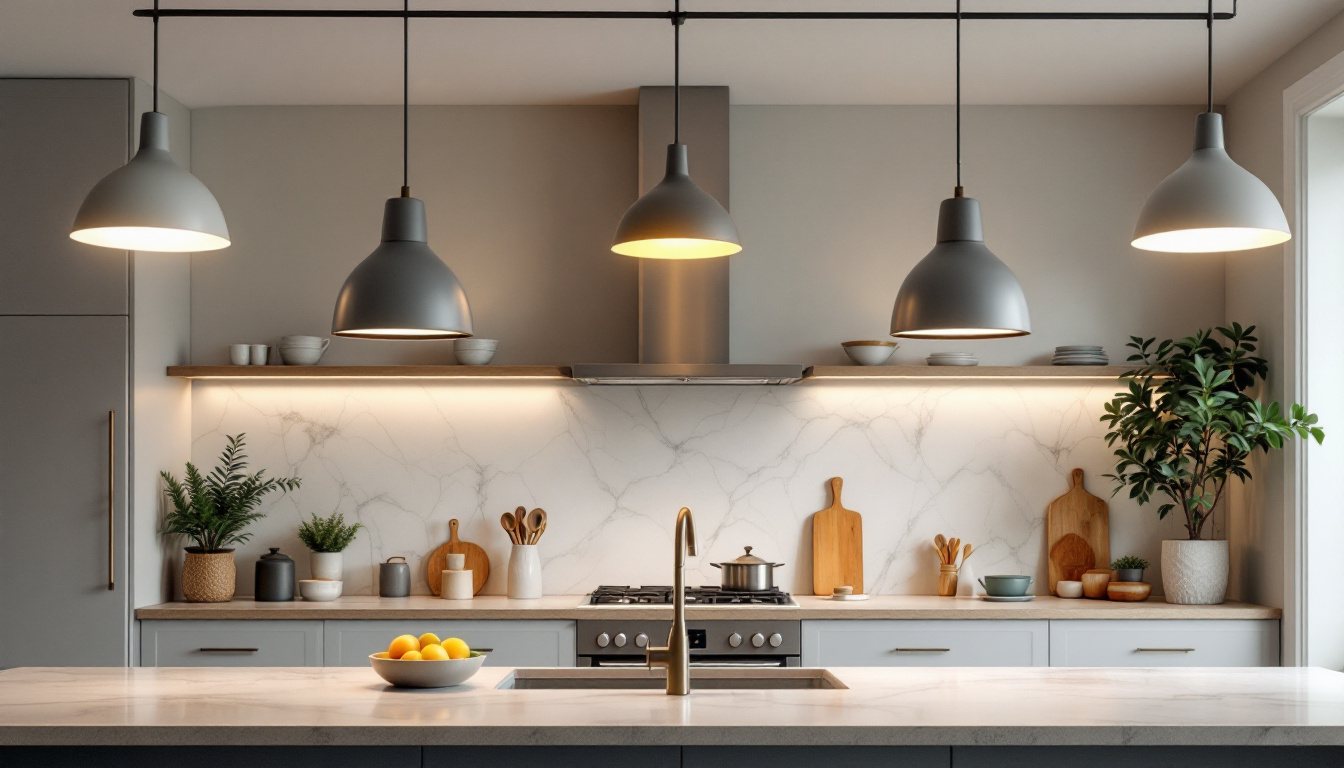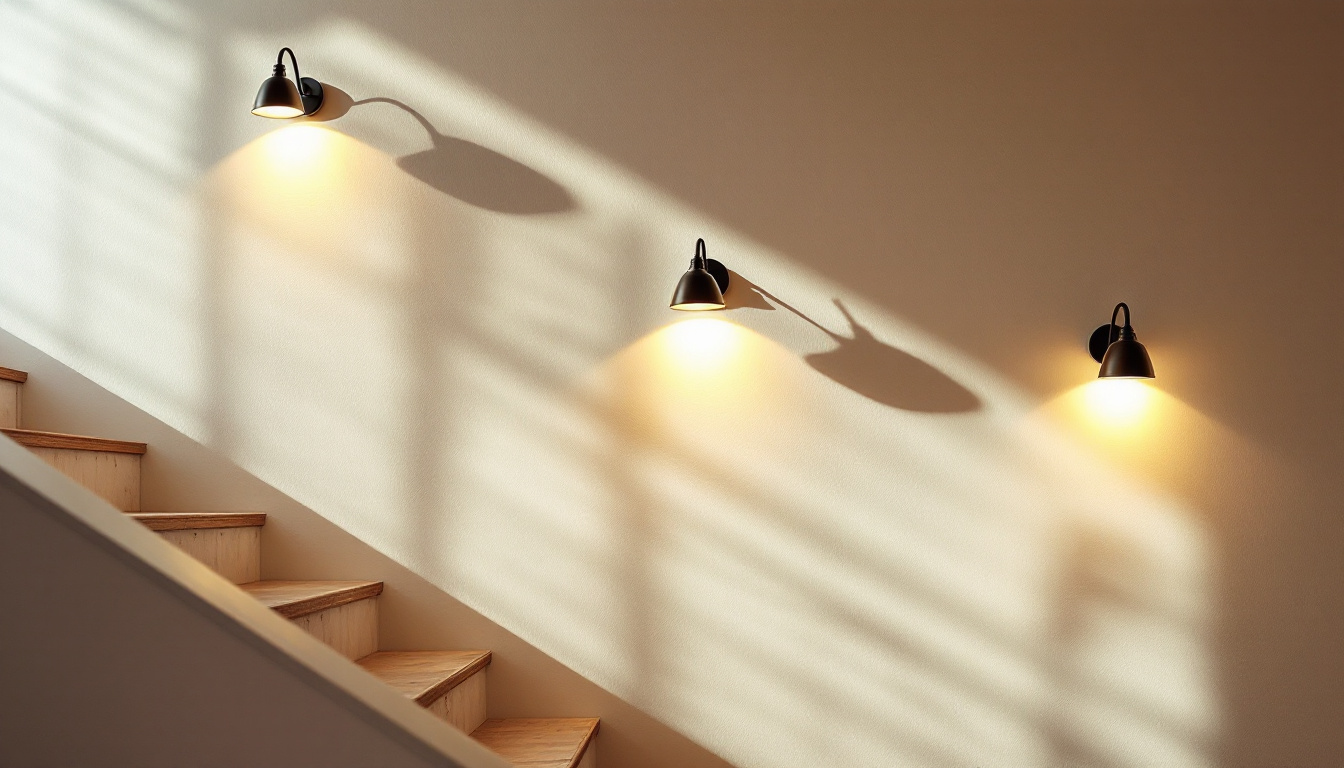
Recessed ceiling lights, often referred to as can lights or pot lights, have become a staple in modern lighting design. These fixtures are installed into the ceiling, providing a clean and unobtrusive look while delivering effective illumination. Their versatility makes them suitable for various applications, from residential homes to commercial spaces. However, the choice of light covers can significantly impact both the aesthetic appeal and functionality of these installations.
For lighting contractors, understanding the nuances of recessed ceiling light covers is essential for maximizing profitability. The right covers not only enhance the visual appeal of the lighting but also improve energy efficiency and ease of maintenance. This article delves into the various aspects of recessed ceiling light covers and how they can be leveraged to boost profitability in lighting installations.
Light covers serve multiple purposes in recessed lighting installations. Primarily, they protect the light source from dust and damage, ensuring longevity and consistent performance. Additionally, the design of the cover can influence the quality of light emitted, affecting both brightness and color temperature.
Moreover, light covers contribute to the overall aesthetic of a space. A well-chosen cover can complement the interior design, enhancing the ambiance and making the lighting fixtures a focal point. For contractors, offering a variety of cover options can cater to diverse client preferences, thereby increasing customer satisfaction and potential referrals.
In addition to aesthetics, the choice of light covers can also play a crucial role in energy efficiency. Many modern covers are designed to minimize heat loss and improve the overall energy performance of the lighting system. By selecting energy-efficient covers, contractors can help clients reduce their utility bills while promoting environmentally friendly practices. This not only appeals to eco-conscious consumers but can also be a selling point for contractors looking to differentiate themselves in a competitive market.
Furthermore, the installation process of recessed lighting can vary significantly based on the type of cover chosen. Some covers are designed for easy installation and maintenance, allowing for quicker project turnaround times, which can enhance a contractor’s workflow and profitability. Understanding the compatibility of various covers with different types of recessed fixtures is essential for ensuring a seamless installation process and minimizing potential issues down the line. By staying informed about the latest trends and technologies in light covers, contractors can position themselves as knowledgeable experts, further solidifying their reputation in the industry.
There is a wide range of recessed ceiling light covers available, each designed to meet specific needs and preferences. Understanding these options can help contractors recommend the best solutions to their clients, ultimately leading to more successful installations.
Standard covers are the most common type used in residential and commercial settings. They come in various shapes and sizes, typically made from materials such as plastic or glass. These covers are designed to diffuse light evenly and can be found in both clear and frosted finishes.
While standard covers are functional, they may not always meet the aesthetic demands of high-end projects. Therefore, contractors should be prepared to discuss alternative options that align with their clients’ design visions. Additionally, standard covers can be easily replaced or upgraded, making them a practical choice for spaces that may undergo renovations or changes in decor over time.
For projects that require a touch of elegance, decorative covers are an excellent choice. These covers can feature intricate designs, patterns, or finishes that enhance the overall aesthetic of a space. Materials like metal, glass, or even custom prints can be utilized to create a unique look.
Offering decorative covers can set a contractor apart from competitors, as clients often seek personalized solutions that reflect their style. However, it’s essential to balance aesthetics with functionality, ensuring that the covers do not impede the light output. Moreover, decorative covers can also serve as conversation starters, adding character and charm to a room, making them ideal for spaces like galleries, boutiques, or upscale restaurants.
As sustainability becomes increasingly important in construction and renovation, energy-efficient covers are gaining popularity. These covers are designed to minimize heat loss and improve the overall energy efficiency of lighting systems. They often feature insulation and advanced materials that help reduce energy consumption.
Contractors can leverage the growing demand for energy-efficient solutions by educating clients on the benefits of these covers. Not only do they contribute to lower energy bills, but they also align with eco-friendly building practices, appealing to environmentally conscious consumers. Furthermore, many energy-efficient covers are compatible with smart home systems, allowing for enhanced control over lighting and energy use, which can be a significant selling point for tech-savvy clients looking to modernize their spaces.
Selecting the appropriate recessed ceiling light cover is crucial for the success of any lighting installation. Factors such as the intended use of the space, design preferences, and budget must all be considered when making recommendations.
Before suggesting specific covers, it is vital to conduct a thorough assessment of the client’s needs. Understanding the purpose of the lighting—whether for task lighting, ambient lighting, or accent lighting—will guide the selection process. For instance, a kitchen may require brighter, more focused lighting, while a living room could benefit from softer, diffused light.
Additionally, discussing the client’s aesthetic preferences can help narrow down the options. Are they looking for a modern look, or do they prefer something more traditional? Engaging clients in this conversation not only helps in choosing the right cover but also fosters a sense of collaboration and trust.
Budget is often a significant factor in any lighting project. While it’s tempting to recommend high-end decorative covers, it’s essential to align suggestions with the client’s financial constraints. Offering a range of options at various price points can ensure that clients feel they are getting value for their investment.
Educating clients about the long-term benefits of higher-quality covers—such as durability and energy savings—can also justify a higher initial expense. This approach can lead to more informed decisions and ultimately enhance client satisfaction.
Once the appropriate covers have been selected, proper installation is critical to ensure optimal performance and longevity. Lighting contractors must adhere to best practices during installation to avoid common pitfalls that can lead to issues down the line.
One of the most common mistakes in recessed lighting installations is selecting covers that do not fit the housing properly. A loose or improperly fitted cover can lead to light leakage, reduced efficiency, and potential damage to the fixture. Contractors should always verify the compatibility of the cover with the housing before installation.
Additionally, ensuring that the cover is securely attached will prevent any rattling or movement, which can be particularly problematic in high-traffic areas. Taking the time to double-check these details can save time and money in the long run.
Safety should always be a top priority during the installation process. Contractors must adhere to local electrical codes and regulations, ensuring that all wiring is properly insulated and secured. This not only protects the integrity of the installation but also safeguards the clients and their property.
Using high-quality materials and components is essential for maintaining safety standards. Investing in reliable products will reduce the likelihood of electrical failures and enhance the overall quality of the installation.
Once contractors have a solid understanding of recessed ceiling light covers and their benefits, the next step is to effectively market these offerings. A well-thought-out marketing strategy can significantly enhance visibility and attract new clients.
One of the most effective ways to market recessed ceiling light covers is by showcasing previous work. A well-curated portfolio that highlights various installations, including different cover types, can demonstrate expertise and versatility. High-quality images and detailed descriptions of each project can capture potential clients’ attention and inspire confidence in the contractor’s abilities.
Additionally, sharing client testimonials can further reinforce credibility. Positive feedback from satisfied customers can be a powerful marketing tool, helping to build trust and encourage referrals.
In today’s digital age, social media platforms offer an invaluable opportunity for contractors to reach a broader audience. Sharing images of completed projects, tips on selecting light covers, and educational content about the benefits of recessed lighting can engage potential clients and position the contractor as a knowledgeable resource.
Interactive content, such as polls or Q&A sessions, can also foster engagement and encourage potential clients to reach out for more information. By maintaining an active online presence, contractors can increase visibility and attract new business.
Recessed ceiling light covers play a crucial role in the overall success of lighting installations. By understanding the various types of covers available, assessing client needs, and adhering to best installation practices, contractors can significantly enhance their profitability.
Moreover, effective marketing strategies can help contractors showcase their expertise and attract new clients. As the demand for quality lighting solutions continues to grow, staying informed about the latest trends and innovations in recessed ceiling light covers will ensure that contractors remain competitive in the industry.
Ultimately, maximizing profitability in lighting installations is about providing value to clients through knowledge, quality products, and exceptional service. By focusing on these elements, contractors can build lasting relationships with their clients and establish a reputation for excellence in the lighting industry.
Ready to elevate your lighting installations with the finest recessed ceiling light covers on the market? Look no further than LumenWholesale. Our commitment to quality and affordability ensures that you have access to the best spec-grade lighting products at wholesale prices. Say goodbye to local distributor markups and hello to a vast selection of industry-standard lighting solutions. With free shipping on bulk orders, LumenWholesale is your go-to source for lighting that combines quality, affordability, and convenience. Don’t compromise on your lighting installations. Wholesale Lighting at the Best Value is just a click away.

Discover the science behind wall outlet types for lighting contractors, learn key differences, and enhance your installation skills—boost safety and efficiency today!.

Discover the essentials of kitchen ceiling light fixtures in just five minutes.

Discover how under cabinet tape lights can revolutionize your lighting projects by saving time and reducing costs.

Illuminate your staircase with style and safety using our comprehensive lighting contractors’ checklist.